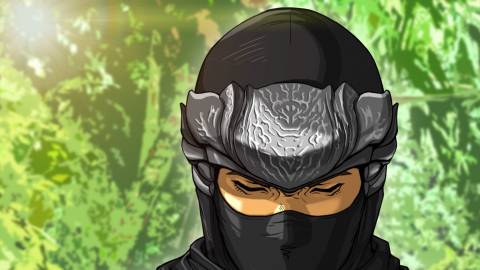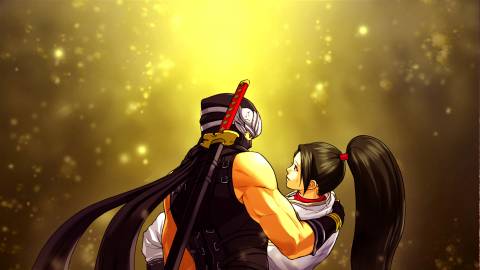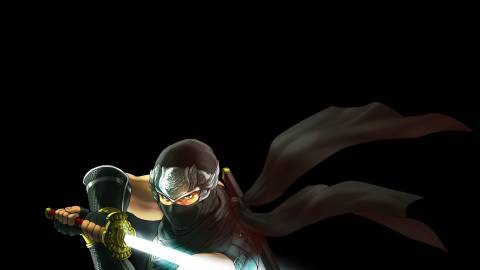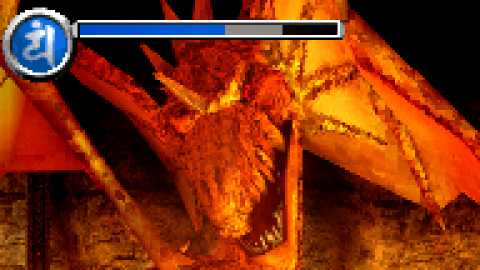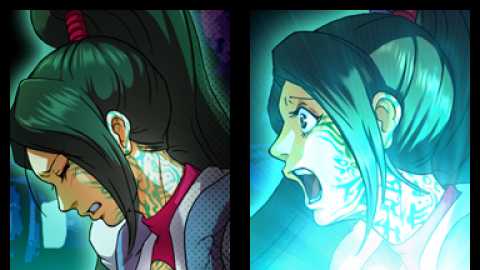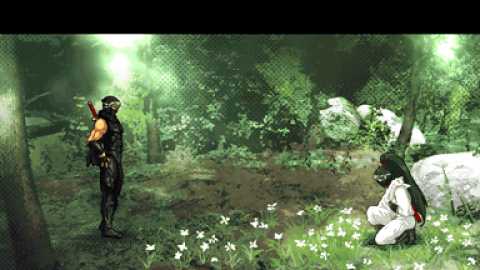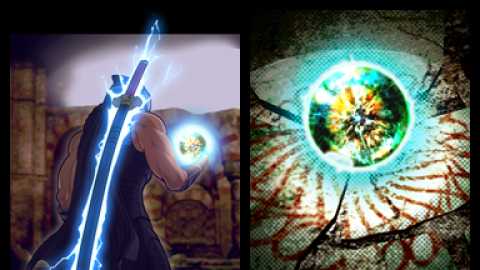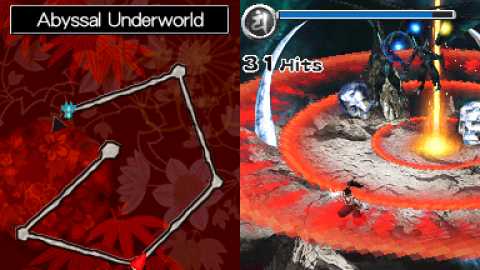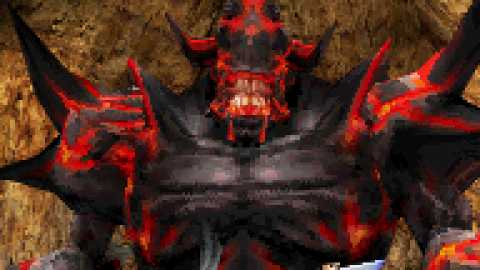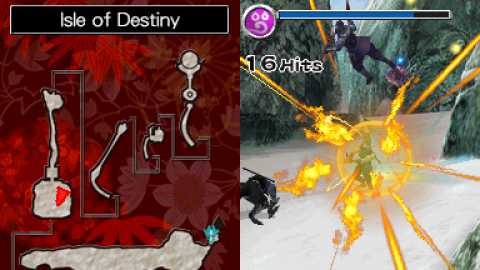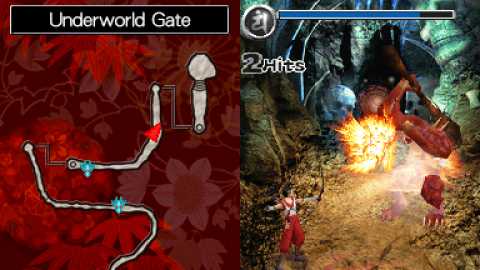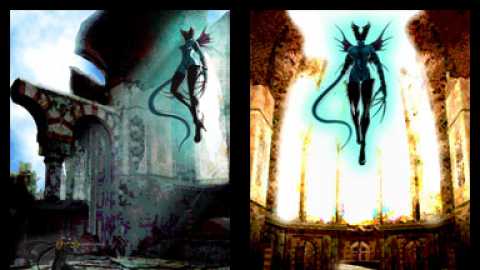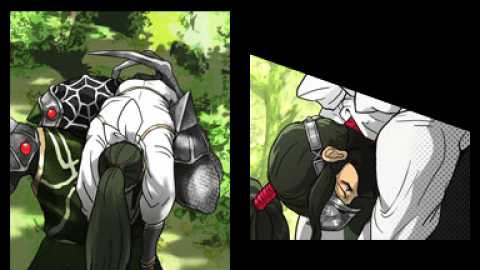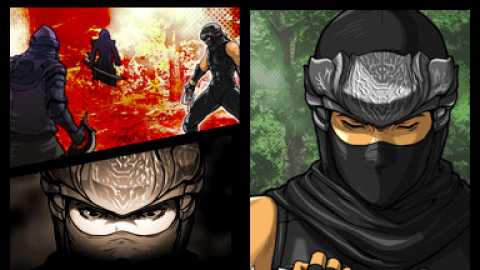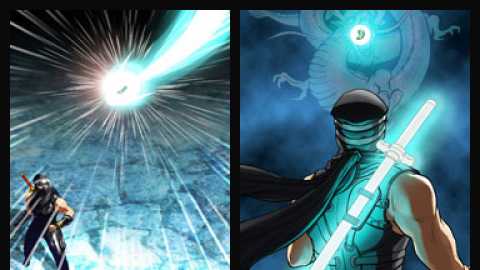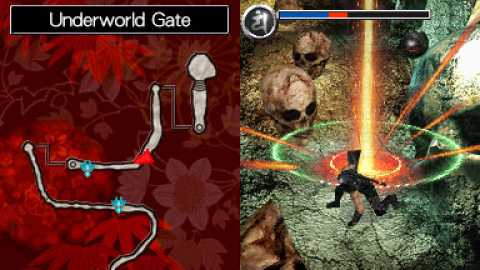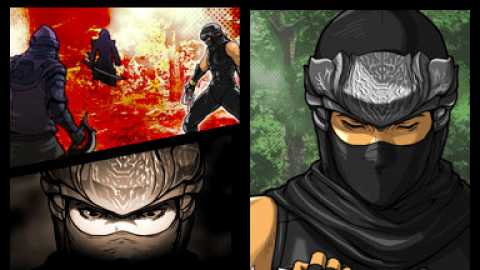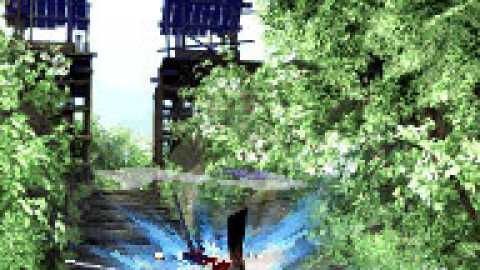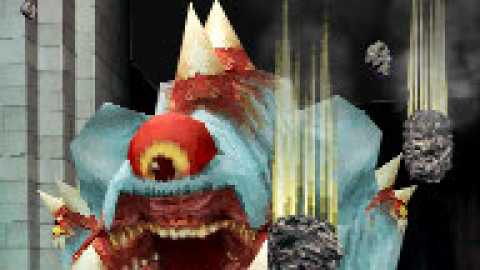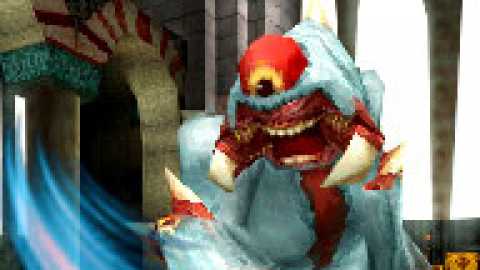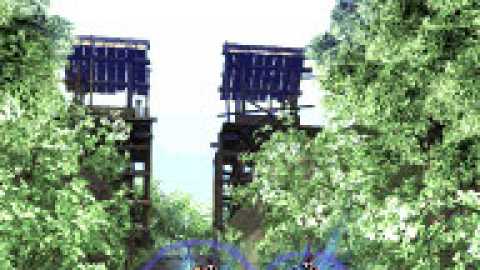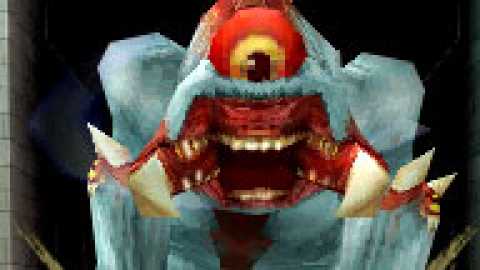Overview
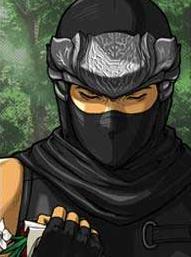
Ninja Gaiden: Dragon Sword is a Nintendo DS iteration in the Ninja Gaiden franchise, and the second handheld iteration (the first being Ninja Gaiden Shadow). The game was released in Japan on March 20, 2008, in North America on March 25, 2008, in Australia on June 26, 2008, and in Europe on June 27, 2008. It was developed by Team Ninja and published by Tecmo ( Ubisoft in Europe). The game follows the story of Ninja Gaiden on the Xbox, and thus is a third-person action game presented in an overhead viewpoint. The game is also held sideways, a la Brain Age: Train Your Brain in Minutes a Day! or Hotel Dusk: Room 215. Ninja Gaiden: Dragon Sword is "pseudo-3D," which means that all of the character and enemy models are in 3D, while the backgrounds and environments are pre-rendered.
Ninja Gaiden: Dragon Sword was well received from critics, who praised it for the great graphics (considering the power of the handheld) and innovative control scheme. The game was criticized for its short length (around six or seven hours) and for being incredibly easy, which is ironic given that previous games in the Ninja Gaiden series were criticized for being too hard. Ninja Gaiden: Dragon Sword currently holds an 85% average on Game Rankings and an 84% average on Metacritic.
Plot

The plot centers around the Black Spider Clan first heard of in the original Xbox title, and Momiji, who the Spider Clan have taken away so as to obtain the Eye of the Dragon. At the beginning of the game, Ryu is shown as being Momiji's teacher, and the gameplay opens with the player as Momiji practicing with Ryu. After their practice is finished, Ryu leaves and Momiji stays behind to pick some flowers, only to discover the Black Spider Clan planning to invade. The head of the clan, Obaba, takes her away, and it is here that the player is switched under the control of Ryu. As Ryu is looking for Momiji he is suddenly transported to the Monastery in Tairon, and after his adventures there and with his newly acquired Dark Dragonstone in his hand, meets with Muramasa at Hayabusa Village. It is then he learns that he must find all the Dark Dragonstone's to have the power to defeat the Black Spider clan and Ishtaros, the greater fiend that is controlling them. From there the meat of the game begins, as Ryu goes after the Dark Dragonstone, the Black Spider Clan, Ishtaros, and Momiji.
Gameplay
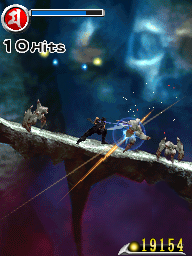
The gameplay in Dragon Sword is unique in that it is entirely based around the stylus (with the exception of the block action, which is mapped to any button on the control pad). Every movement of the stylus corresponds with the action on screen in a precise manner, giving a surprising amount of control to players in the heat of battle. The DS is held horizontally like a book, much like the games Hotel Dusk and the Brain Training titles. The actions are as follows:
- To move: Tap and hold the stylus for Ryu to run to the selected location
- To jump: Flick the stylus upward for Ryu to execute a jump (to double jump, flick upward twice)
- To attack regularly: Draw a horizontal or vertical slash on the screen for Ryu to mirror that action
- To block: Hold any face or shoulder button down to block
- Reverse Wind Technique: While holding down the block button, slide the stylus horizontally to roll quickly and evade incoming attacks
- To perform a projectile attack: Tap the enemy and Ryu will fire either a Shuriken or an arrow, depending on the selection
- The Izuna Drop attack: Swipe the stylus down once, then up twice for Ryu to perform a flying pile drive on the enemy
- The Flying Swallow attack: Flick the stylus up once to jump, then horizontally right or left to slash through multiple enemies lightning fast (when the Continuous Flying Swallow is obtained, swipe horizontally repeatedly in the air after jumping)
- The Divine Cicada Slash attack: Flick the stylus up once to jump, then down once to perform a powerful downward slash
- Ultimate Technique: Slide the stylus back and forth quickly across the screen to power up and let off a blast of slashes covering a wide area

- Ninpo Attack: To activate Ninpo, tap the Ninpo icon below the health bar, and fill in the Sanskrit character to unleash the selected Ninpo magic.
- Art of the Inferno: Creates a controllable fireball around the battlefield
- Art of the Inazuma: Creates a lightning storm, where the player taps enemies to rain lightning strikes upon them.
- Art of the Hurricane: A massive tornado is summoned, which can be controlled, and attacks multiple enemies at once.
- Art of the Fire Wheels: Fireballs swirl around Ryu, giving him more powerful, fire-based strikes.
- Art of Divine Life: Summons several blue healing essence orbs, which (duh) heal Ryu
- Art of the Ice Storm: Creates a howling blizzard, from which Ryu can tap enemies and encase them in ice
- Art of the Piercing Void: Meteors rain down on the battlefield, attacking every enemy once.
Another classic Ninja Gaiden element on the battlefield are essence orbs, which Ryu depends upon for pretty much everything, including money, health, and ninpo.
- Yellow Essence: Defeated enemies that drop these give Ryu money for purchases from Muramasa`s shop.
- Blue Essence: These orbs replenish Ryu`s health.
- Red Essence: The rarest one, these orbs replenish Ryu`s ninpo slot.
The amount of gain Ryu receives from the orbs depends on the size of the orb. For instance, regular attacks will leave small orbs hanging in the air, while enemies defeated from the Ultimate Technique will leave large orbs.
Contrary to popular opinion before the game was released, Dragon Sword is not the type of game where the player can simply scratch the stylus frantically over the screen and hope for the best. Each move has a particular action that translates into smooth, powerful, and satisfying combos. Unfortunately, the only weapon available in Dragon Sword is, obviously, the Dragon Sword. As in other Ninja Gaiden games, however, this can be upgraded at Muramasa`s shop in between missions. Other purchases in Muramasa`s shop include health upgrades and new moves. The list of items to buy from Muramasa`s shop are as follows:

- Lives of a Thousand Gods: This purchase permanently increases Ryu`s health bar.
- Jewel of the Spirit Smith: These gems upgrade the Dragon Sword up to Level three, after that only the Eye of the Dragon can increase the power of the sword further.
- Technique Scrolls: Including the Izuna Drop, Flying Swallow and Repeated Flying Swallow, and Counter Attack. These teach Ryu new moves.
There are fourteen missions in Dragon Sword, and most are traveled to through the same portal in Hayabusa Village, which takes Ryu into a sort of Fiend realm that basically serves as a transit to the different levels in the game, which are opened up as the player progressively obtains more Dark Dragonstones. Many of Dragon Sword`s levels are very familiar to players of the Xbox Ninja Gaiden game, such as the Monastery in Tairon, the Ice and Fire caves, and even the Pyramid later on in the story. Subsequently, many of the enemies will be familiar to any player of the Xbox version. There are a few Black Spider ninjas to fight, but most of Ryu`s time is taken destroying fiends. Most of these, such as the Pink Shadow fiend, the large wasps and infamous Skeletons and Ghost Fish, are classic Ninja Gaiden. Even the bat-filled shafts are back. Many of the bosses are also making another appearance with their recycled dungeons, such as the bone-headed vulture and flame dragon, albeit with an easier difficulty level than in the last game.
The difficulty in Dragon Sword has actually been a well-discussed topic, as for many players the less punishing difficulty of Dragon Sword, as compared to the Xbox version, is too easy. As was mentioned above, the bosses are especially easier to take down, which is very noticeable since many of the bosses that are fought in Dragon Sword are the same ones fought in the Xbox game. However, upon completing the game the first time, harder difficulty settings are unlocked, including Head Ninja difficulty and Master Ninja difficulty. As a bonus, the creators added in another setting called Master Kunoichi mode, where the player must not die in the practice fight against Ryu when playing as Momiji and must win against the first boss as Momiji as well to unlock Rin. Speaking of secrets, another feature of the game is wood amulets that can be found by finding purple birds hiding around the many levels. If Ryu enters a room with a high-pitched bird call and the player blows into the DS mic, the bird will reveal itself, allowing the player to chop it down and be rewarded with a numbered wooden amulet. To unlock all of them the player must play through all the difficulty levels, and the prize for all this trouble is found under the main menu, where the player will be able to peruse secret character diary entries, cutscenes from the game, and more, depending on how many amulets the were found.
There is Wi-FI capability for Dragon Sword, however, its functionality is limited only to the posting of Karma scores on leaderboards over the network.

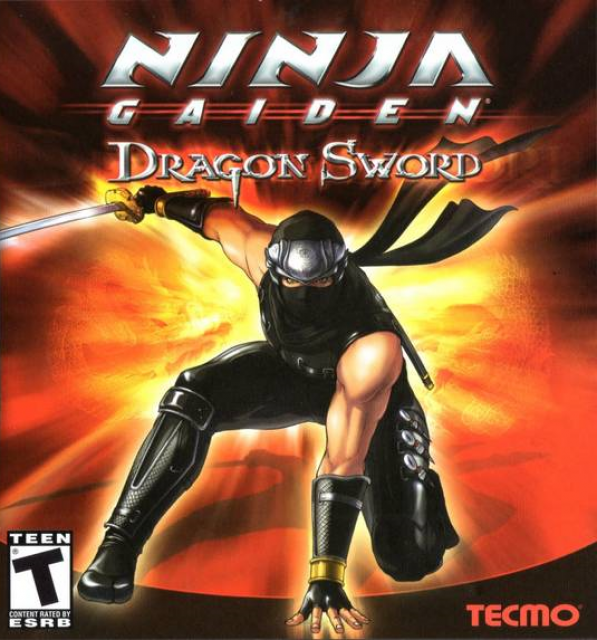
 Nintendo DS
Nintendo DS